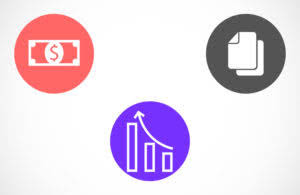
Where the cost of each unit is $1.5 million, the total cost is calculated to be $6 million. As straightforward as it gets, to recognize revenue, you consider the price of each delivered item. This method is more accurate in calculating your project revenue than cost. Scope creep is what you call a project correctional phase, a stage common with poorly planned projects with the sole aim of bringing the project back on track. What this implies is that as labor and material resources are used or mismanaged, financial resources are inevitably used up and you eventually have to spend more than initially budgeted.
- Don’t worry about any of these (yet), by the end of this post you will understand the basics surrounding what is project accounting and be able to put the accompanying terms into practice quickly.
- It’s important to remember that each resource has a cost assigned to it, and as they add up, you can further understand the actual vs. planned time and cost of the project.
- Managing a project is more than just completing tasks and meeting deadlines.
- To understand how the project is progressing and if it’s hitting the goals set in the planning stage, project managers always need a clear overview of how much time employees are spending on projects.
- By tracking these metrics accurately, you’ll be able to identify potential issues or areas for improvement and make adjustments to your project as needed.
- At this point, project managers start to see the difference between what they planned and how work progresses, and start to report the health of the budget to stakeholders.
- For budget overruns to stop happening in project-based companies, it’s important to see where teams register their time.
At the intersection of project management and financial accounting, project accounting is a relatively new, but important skill to pick up. It contributes to a sustainable use of resources in project- and service-oriented companies and helps to keep failures at bay. It would also be up to the project accountant to do monthly reports on how the project financials progress, forecast the budget and costs, and problem solve based on the numbers they see. ProjectManager lets you make a cost management plan, organize tasks, resources and more. You can set your budget and track it in real time, creating detailed reports to help you stay on schedule and within budget.
Automate Project Accounting With NetSuite’s Accounting Module
Whether your A&E firm is small and looking to grow or a larger sophisticated organization, a project accounting system leverages financial functions unique to project-based organizations. The resulting data helps you analyze your current state and strategize your leap to the next level of success. In this final phase, project managers complete the project’s financial records and close out any outstanding accounts. With a clear financial picture of a project, project managers can easily create reports and update their stakeholders on its progress. Project accounting provides project managers with the financial information they need in order to make informed decisions about their projects. Then, project managers can evaluate the feasibility of different project options and determine the best course of action.
- For instance, cash and accounts payable in the general ledger cover those transactions for the entire company.
- But, it won’t do much for you if you’re not ready to review the finances regularly and change anything that can be done better.
- Reports are generated on these areas and used by stakeholders to maintain proper visibility into the financial progress of the project.
- Take a close look at your past projects to see if it’s possible to detect the causes of cost slippages.
- However, this method goes beyond profit and loss statements by identifying sources of revenue and costs—helping you not only track profit, but also giving you clarity on how profit was earned.
- Government contracts come with unique, diverse and complicated accounting and reporting requirements that demand purpose-built solutions.
- For instance, dedicating some time to research and analyzing features and pricing that fit your needs will go a long way in this process.
When it comes to estimating the cost of labor, things can become even more complicated, as you’ll have to deal with the efforts of everyone involved in the project. You can use project-based accounting to spot scope creep like this in its early stages. If you review the project’s transactions and see that the team is spending money on things outside the original mission statement, that’s a warning sign for scope creep. Every project depends heavily on resources, including time, labor, and materials. For project accounting, knowing how to allocate and consume these resources is essential to tracking whether your budget is within your established parameters. You separated your budget into categories in the budget phase—now it’s time to break the project down even further.
Project Accounting Checklist Along the Project Process
Project-based accounting can be a valuable tool for effective project management by providing a detailed view of project financials and progress. Through proper time tracking, you make adjustments to your appointments and schedules and ensure all tasks are completed before the project due date. Where more time is spent on a project than planned for, more resources are expended on the project which equally translates to more cost. Project accounting evidently has a close relationship with your resource management processes.
In fact, for project accountants, it’s the most responsible period, where their skills come in especially handy to maintain the financial health of the project and monitor its profitability. To ace project accounting, the focus of the project manager should be on the full scope of resources. Every project depends heavily on resources, such as time, labor, and material. So you want to be certain of how resources are allocated and what their consumption levels are. At the end of the day, only by tracking resources, you can collect the puzzles and say if the numbers are inside or outside the established perimeter.
Global sustainability standards
Then, you can also compare tracked time and estimated time for projects and tasks. Once the project begins, the project’s progress and budget have to be monitored closely. If you’re just now getting familiar with the term “project accounting”, you may start confusing it with other similar terms. Let’s break down the most popular types of accounting and how different they are from project accounting. These folks should have a better idea about whether or not tasks, deliverables, and milestones are actually achievable in the cost and time constraints you’ve set them.

For more in-depth data, use our one-click reports on timesheets, costs and more. All reports can be filtered to show only the information you want to see and easily shared with stakeholders to keep them updated. In addition, project accountants review processes for managing accounts and work with auditors. It’s the project accountant’s responsibility to develop financial systems with the IT team in order to be more user-friendly.
Want to become proficient in project accounting, but don’t know where to start? We’ve made this guide for everyone who dreams to forget about budget overruns by adequately analyzing, tracking, and reporting project finances. If managers or stakeholders want to know how the project is progressing, the project accountant should be able to tell them. When the project wraps up, you’ll close the accounts, transfer sub-ledger information to the general ledger, and submit any relevant tax paperwork to state and federal agencies. Just because your business turns a profit doesn’t mean everything it does is profitable.

Our Standards are developed by our two standard-setting boards, the International Accounting Standards Board (IASB) and International Sustainability Standards Board (ISSB). This is the final stage where your project is rounded up and delivered. The time spent on a project defines how well the project has gone and how feasible ending it on the scheduled deadline is.
Second Comprehensive Review of the IFRS for SMEs Accounting Standard (Agenda Paper
Yes, they both deal with costs and expenses, but the context and the execution differ enough to make it worth exploring some of those differences. Something else to consider is that using project accounting to compare costs is not usually as straightforward as comparative analysis in general accounting. In general accounting, you can simply compare expenses from a previous period with those in the current period. The initiation phase is majorly concerned with whether available financial and time resources are enough for the new project to be taken on. The process of project accounting is not entirely complete or even feasible except when certain actions are taken.
